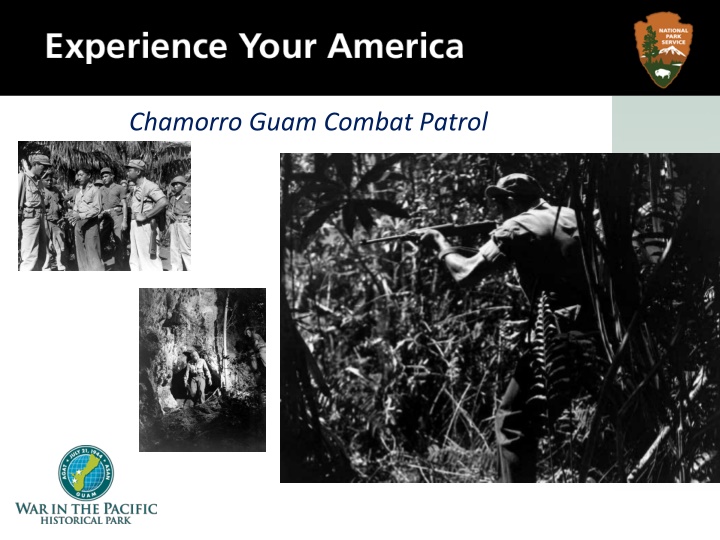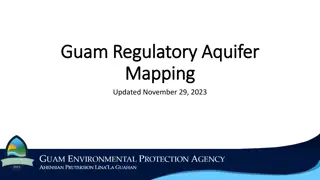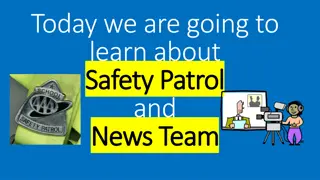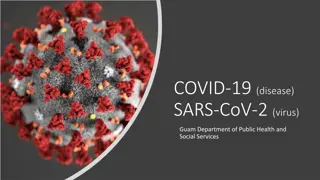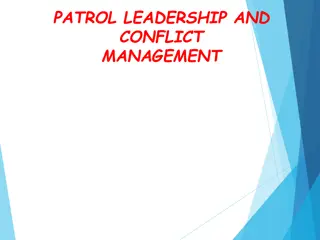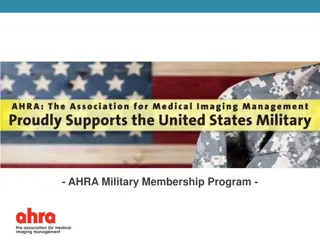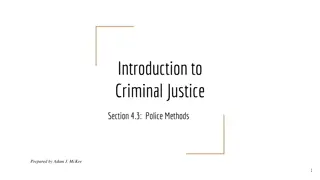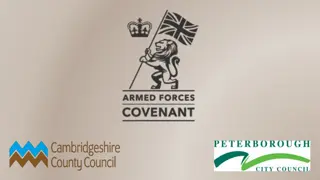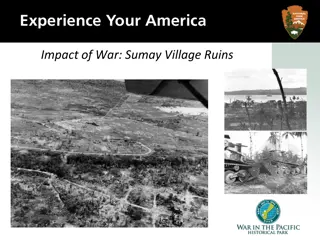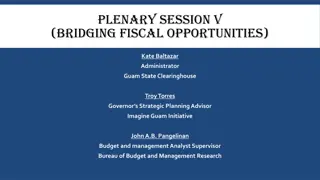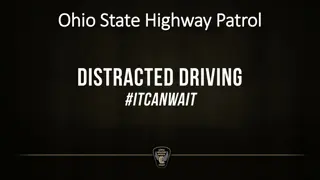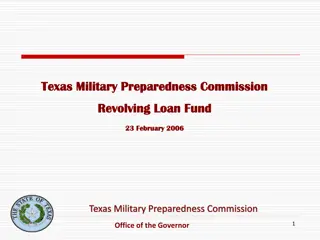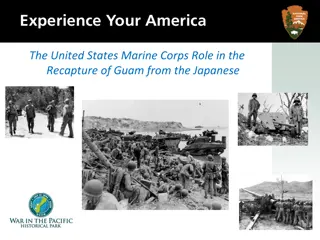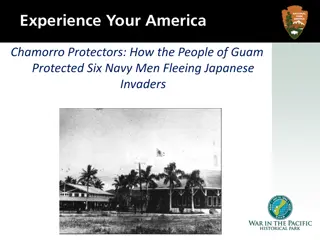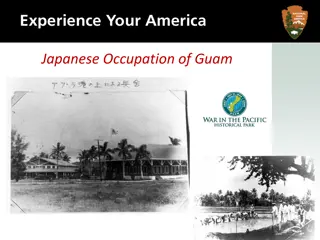Chamorro Military Patrol in Guam During WWII
In July and August of 1944 and 1945, the Chamorro Military Patrol played a crucial role in recapturing Guam from the Japanese forces during World War II. Through intense combat patrols, the local Chamorro scouts aided the US armed forces in locating Japanese troops hidden in the dense jungle vegetation. This historical account showcases the bravery and strategic importance of the Chamorro fighters in the Pacific theater.
Download Presentation

Please find below an Image/Link to download the presentation.
The content on the website is provided AS IS for your information and personal use only. It may not be sold, licensed, or shared on other websites without obtaining consent from the author.If you encounter any issues during the download, it is possible that the publisher has removed the file from their server.
You are allowed to download the files provided on this website for personal or commercial use, subject to the condition that they are used lawfully. All files are the property of their respective owners.
The content on the website is provided AS IS for your information and personal use only. It may not be sold, licensed, or shared on other websites without obtaining consent from the author.
E N D
Presentation Transcript
In July 1944, U.S. armed forces stormed ashore to recapture Guam from the Japanese. Here Chamorro Military Patrol members Joaquin Aguon and Pedro San Nicholas are protecting the rear flank Dense vegetation made reconnaissance planes ineffective.
The only practical way to ferret out Japanese locations was to scour the area on foot and rely on intelligence from local Chamorro scouts. Led by Sgt. Juan Aguon, patrol scouts are in a single file line using tracking methods to find Japanese stragglers. July 1945.
The Chamorro Combat Patrol on the island of Guam. August 14, 1945 The island was declared secure on August 10, 1944, but thousands of Japanese remained in the jungles at that time. For these men, and the men whose job it was to hunt them down, the war was far from over.
According to Major O.R. Lodge, USMC, The native guides who accompanied many of the Marine and Army patrols during the campaign proper and the mop up period performed invaluable service in ferreting out Japanese troops and equipment. A photo of the Guam Combat Patrol
Analyzing Photographs & Prints 1) Observe 2) Reflect Identify and note details. Ask yourself the following questions: What did I notice first? What people and objects are shown? How are they arranged? What is the physical setting? What, if any, words do I see? What other details can I see? Generate and test hypotheses about the image. Why do you think this image was made? What s happening in the image? When do you think it was made? Who do you think was the audience for this image? What tools were used to create this? What can you learn from examining this image? What s missing from this image? If someone made this today, what would be different? What would be the same?
Write a caption for each of the following images that you see. OR Predict what will happen one minute after the scene shown in the following images. Now Let s Analyze!
Chamorro Combat Patrol & U.S. military personnel crouching over two Japanese bodies. August 14, 1945.
Located in the office of the Chief of Police, Corporeal Felix Wusstig is recording another dead Japanese soldier. July 1945.
A Chamorro farmer explains to the Chamorro Military Patrol that items from his farm are missing from the night before. He suspects Japanese stragglers have been stealing from him. July 1945.
Boza Vicente lies in bed wounded from an attack by seven Japanese with grenades on a patrol in the hills of Guam.
Francisco Cruz comes out cautiously out of a cave after an inspection while a fellow patrol member, Jose Tenorio, protects him from attacks. July 1945.
Eating at a local ranch for a meal. On the left is a Navy photographer, Arthur Rickerbe. July 1945.
The loosely formed civilian scouts who were engaged in this hunt were succeeded in November 1944 by the Guam Combat Patrol. An exhibit honoring the Guam Combat Patrol.
Analyzing Photographs & Prints 3) Further Investigation Ask questions to lead to more observations and reflections about these photos. What do you wonder about Who? What? When? Where? Why? How? information and understanding of World War II. How would you refine or revise the way history could be taught in schools? How would you expand or alter your textbook explanations of history based on these primary sources you just looked at? Consider how these photos support or challenge
Bibliography War in the Pacific National Historical Park. Combat Patrol. nps.gov. National Park Service, n.d. Web. 2 March 2011.
